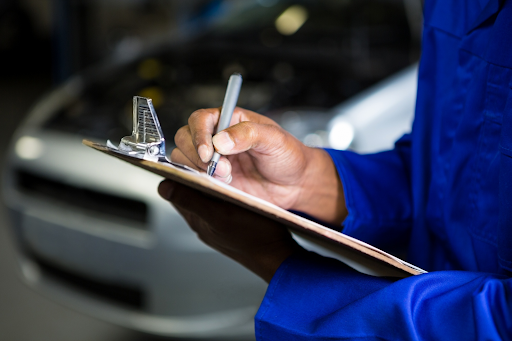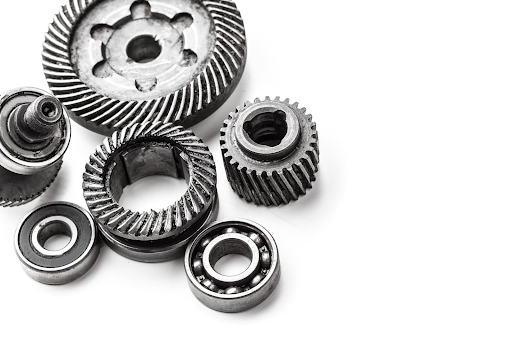At some point, you’ll need to look into the maintenance requirements for your vehicle, particularly for spare parts that undergo regular wear and tear. Among these, your brakes, specifically the brake pads or liners, are vital for your safety. In today’s market, you will find a wide array of options available when it comes to selecting brake pads and liners but not all of them will be of genuine quality. You must make sure the brake pad you choose is not fake otherwise, it may affect the operation of the entire braking system and cause harm to your vehicle.
The evolution of the automotive brake system has been remarkable. It has progressed from the older mechanically-operated brake pads and drum system to the modern computer-controlled ABS. Regardless of the system, all brake parts will inevitably wear out and will require replacement one by one. Among these parts, brake pads endure the most wear and damage. While it’s generally advisable to stick with the Original Equipment Manufacturer (OEM) brake system part, but sometimes the customer gets misled by counterfeit brands.
Following are some indicators that will help the audience identify the right Brake Liner for their commercial vehicle:
Table Of Contents :
Choosing the Right Brake Pads for Your Vehicle
- All-weather performance:
- Brake Pad & Liner lifetime:
- Noise & vibration:
- Friction response to temperature:
All-weather performance:
Quality brake pads are expected to deliver consistent performance in a variety of weather conditions, whether it’s dry, wet, muddy, hot, or cold. This versatility ensures that your vehicle’s braking system remains effective and reliable under diverse environmental circumstances.
Brake Pad & Liner lifetime:
Both the brake pads and liners are susceptible to wear in your vehicle’s braking system. But a genuine quality Brake pad would last longer and wear out slowly in comparison to fake parts. Check the lifetime and compare before selecting a brake pad.
Noise & vibration:
Also consider the level of noise, vibration and even the pressure you feel when pressing down the pedal.
Friction response to temperature:
The friction profile of brake pads is assessed by measuring how much force is required to apply on the brake pedal to achieve a similar response during emergency braking as compared to regular braking. This feature helps determine the brake pad’s performance and its ability to provide consistent stopping power under different braking conditions.
Most importantly the best advice for replacing brake pads is to always follow the manufacturer’s recommendation while choosing a brake pad. In most cases, this means you will ask for OEM replacement parts only. Moreover, based on the type of vehicle, your brake pad should be made of 3 materials Organic, Semi-metallic, and Ceramic brake pads.
1. Organic Brake Pad
In the past, brake pads were crafted from asbestos, a rigid but hazardous substance known to be a source of various respiratory illnesses. Following the ban on asbestos, brake pads began to be produced using a blend of diverse materials like carbon, glass, rubber, fibers, and others. Organic brake pads are renowned for their quiet operation and gentle application of braking force. However, their primary downside is their relatively shorter lifespan.
2. Semi-Metallic Brake Pads
Most vehicles on the road today rely on semi-metallic brake pads. These pads are made from a mixture of copper, iron, steel, and various metals, which are blended with graphite lubricants and other components to control heat build-up. Semi-metallic brake pads are frequently chosen as original equipment manufacturer (OEM) solutions for heavy-duty vehicles because they have an extended lifespan and can effectively minimize friction. This quality makes them particularly well-suited for heavier trucks, and SUVs, allowing these vehicles to stop more efficiently.
3. Ceramic Brake Pads
The latest addition to the brake pad market is the ceramic pad. Ceramic brake pads were introduced in the 1980s as a safer alternative to the older asbestos-based pads. These brake pads are crafted from a hardened ceramic material infused with copper fiber. Thanks to their distinctive composition, they typically have the longest lifespan among the major types of brake pads and provide a gentle application of braking force. However, there are a couple of downsides to consider. First, while they can handle high temperatures, they are not well-suited for colder climates, as the material is prone to cracking when exposed to extreme cold conditions. Additionally, ceramic brake pads tend to be the most expensive option in the market.
Tata Genuine Parts brake pads are a testament to the brand’s commitment to safety, quality, and performance. Designed and manufactured to meet stringent standards, these brake pads are the ideal fit for Tata Motors Commercial Vehicles. What sets Tata Genuine Parts brake pads apart is their reliability, as they are engineered to ensure optimal braking performance even in challenging conditions. With a focus on safety and longevity, these brake pads not only provide peace of mind to vehicle owners but also contribute to overall road safety. When it comes to replacing brake pads, choosing Tata Genuine Parts is a decision that guarantees both the safety of the passengers and the long-term performance of the vehicle.





